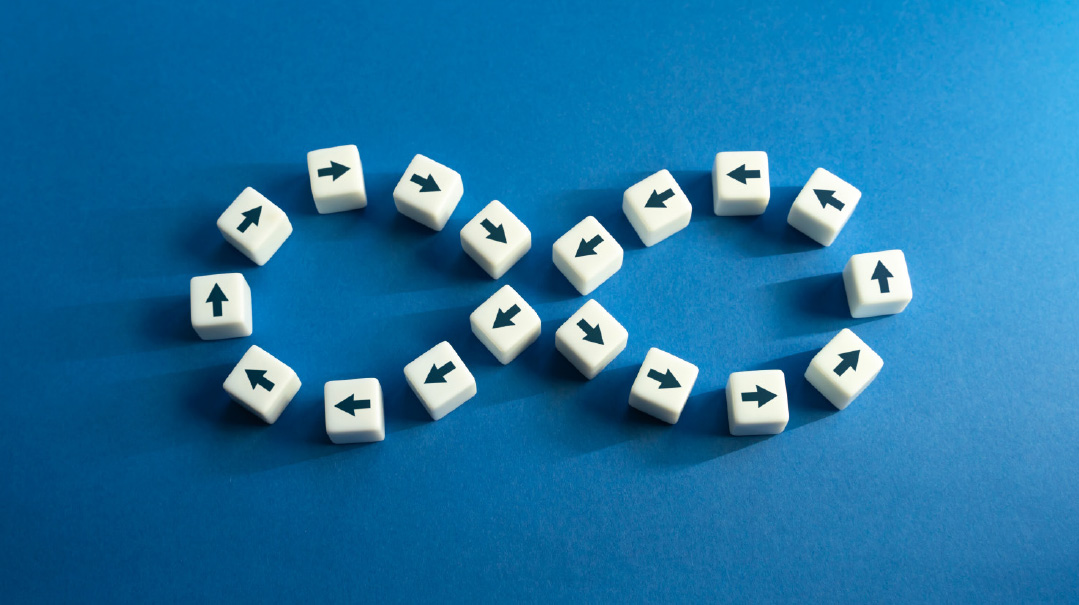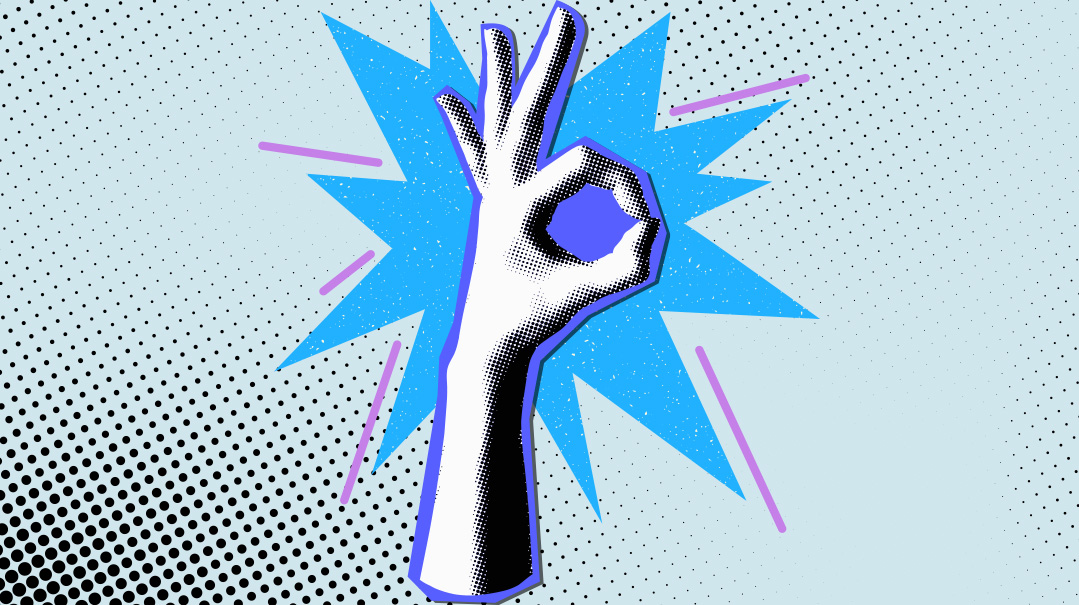Take Charge
| April 3, 2023I encourage a small reframe, which can lead to giant changes: Don’t aim for control, aim to take charge

Take Charge
Shira Savit
“I need to have more self-control.” Women who want to lose weight or feel better about their eating often target their lack of control as the culprit, and I hear this a lot. I encourage a small reframe, which can lead to giant changes: Don’t aim for control, aim to take charge.
Being in control and being in charge sound very similar, but the differences have profound ramifications for our relationship with food and self. To explore why, let’s look at these simple dictionary definitions:
control: to exercise restraint; dominate; command; hold in check; curb; regulation; domination.
in charge: a position of leadership or supervision; having responsibility for.
Control connotes strictness, rules, and discipline, and is often associated with willpower. Willpower can be an important trait, but it’s a limited resource — meaning, we run out of it. If we spend the whole day trying to convince ourselves that we need to have more willpower — actually, more “won’t power” (i.e., I won’t eat the sugar, carbs, white flour, etc.) — we end up depleting our willpower storage house, like a battery that runs out of charge.
Guess what happens when there’s no battery life left? We crash, and have no momentum to push harder. One common cause of late afternoon/nighttime overeating or bingeing is that our willpower has been depleted. We’re drained. We feel like giving up. How many times can we tell ourselves not to eat something throughout the day?
Control has the potential to sabotage our best efforts. It tells us: You need to follow the rules. There is a right way to “do your food,” and, of course, a forbidden or wrong way.
The problem with rules is that when you follow them, you consider yourself “good,” and when you don’t, you’re “bad,” and you feel like a failure. We all know what can happen when we feel we messed up: We go straight to the foods we told ourselves not to have, because, what’s the point, we already slipped. Tomorrow is a new day.
When we switch to being in charge, we are no longer enslaved by rules and restrictions. When we are in charge of our eating, we use our physical sensations (hunger and fullness), emotional awareness, and mental state to help us guide our eating.
We use all of these cues as gentle information, without judgments or accusations, and then decide what we will do next. We might ask questions like: What do I actually need now? Is my body physically hungry? Or maybe I am emotionally hungry? How can I be more compassionate with myself? What acts of self-care can I do today?
Being in charge is about being mindful in the present moment, and then making a conscious decision that nobody else other than ourselves can make.
If willpower is like a battery that runs out, being in charge is like oxygen; it doesn’t run out, and keeps us feeling alive.
As we focus on the themes of slavery and freedom this Pesach, let’s also remember that our mindset can either hold us back or set us free. When we approach our eating from an empowered place, we will sit at the Pesach table and enjoy the sweetness of freedom.
Shira Savit, MA, MHC, INHC is a mental health counselor and integrative nutritionist who specializes in emotional eating, binge eating, and somatic nutrition. Shira works both virtually and in person in Jerusalem.
TMI
Zipora Schuck
IN our day and age, oversharing has become the new norm. Social media and WhatsApp statuses have normalized people showcasing details of their life, clothing, food choices, home, vacations and even other family members. Sadly, society has become desensitized to “Mah tovu ohalecha Yaakov” as a hallmark of modesty and privacy.
It is so much more difficult in this environment to help our children understand the nuanced differences between secrets, private information, and personal details, both in sharing about their lives and in asking questions of others.
Let’s help them remember that secrets are pieces of information shared between friends with an element of trust. It may be something the other person doesn’t want others to know and isn’t yours to pass onward. However, children should never have to hold any information that concerns another child’s safety, nor any secret from an adult to a child, other than the imminent arrival of good news, like an older brother is getting engaged or someone baked Mommy a cake as a surprise for her birthday.
Personal information relates to oneself, one’s body, grades, finances, etc. We don’t discuss weight, details of physical symptoms, midterm marks, or how much certain things cost with those outside our immediate family. We certainly don’t ask others for this type of personal information.
Private information — from the Latin word privatus, which means set apart — refers to information kept within a select group of people such as siblings, or clinician and child. Private information may also be information that is confidential or unwise for someone to share with someone else outside the selected group, like a diagnosis or the code to a front door, or a password.
A good rule for children to remember is comments first, general questions — maybe later. When we meet our neighbors’ child in the middle of the day, it’s best just to say, “It’s good to see you,” and not ask, “Why aren’t you in school today?” If they volunteer some information — for example, that they are on their way back from an appointment, we still wouldn’t ask what it was concerning. If they respond that they were under the weather, a general question like, “How are you feeling now?” is okay. Questions of a more specific nature or that probe for information are intrusive and trample the other person’s boundaries.
Sometimes children overshare too much, too soon in a friendship, offering sensitive details about their families, or their own lives, thinking sharing is currency to offer someone. Children need to understand that such information at the wrong time in a relationship or with the wrong person can be detrimental. The other person wasn’t ready to hold this information for them and may feel that they need more space, and may choose to retreat in their association.
Zipora Schuck MA. MS. is a NYS school psychologist and educational consultant for many schools in the NY/NJ area. She works with students, teachers, principals, and parents to help children be successful.
Finding Freedom
Dina Schoonmaker
The Pesach theme of redemption from slavery to freedom is one that is relevant to all of us. Matzah, the bread of emunah, reminds us that there is only One Force controlling our lives. A person who is a servant to Hashem, and only Hashem, is completely free.
Unfortunately, many of our lives are dominated by other forces.
What holds us captive? Are we enslaved to money? Fashion? Technology? Body image? Perfectionism?
Are we controlled by an unhealthy relationship? Is worry about our loved ones dominating our hearts and minds?
The Chiddushei HaRim points out that we don’t lean when we eat maror because leaning is a symbol of freedom. But when we eat Koreich — combining maror with matzah — we do lean.
He explains the symbolism as follows: Inevitably, there are bitter aspects to life, but when they’re sandwiched with matzah — i.e., surrounded with emunah — we’re able to shift perspective and not let the bitterness dominate us. Then we are truly free.
While preparing for Pesach, we can mindfully discover the substances, concepts, people, situations, or emotions that enslave us. We combine the hishtadlus of self-help (including the many techniques and therapies available) with davening to Hashem to help free us and allow us to worship Him with a clear heart and mind.
As we sing Hallel this Pesach, may we all be zocheh to thank Hashem for releasing us from our personal bondage — “Pitachta l’moseirai.”
Dina Schoonmaker has been teaching in Michlalah Jerusalem College for over 30 years. She gives women’s vaadim and lectures internationally on topics of personal development.
(Originally featured in Family First, Issue 838)
Oops! We could not locate your form.







